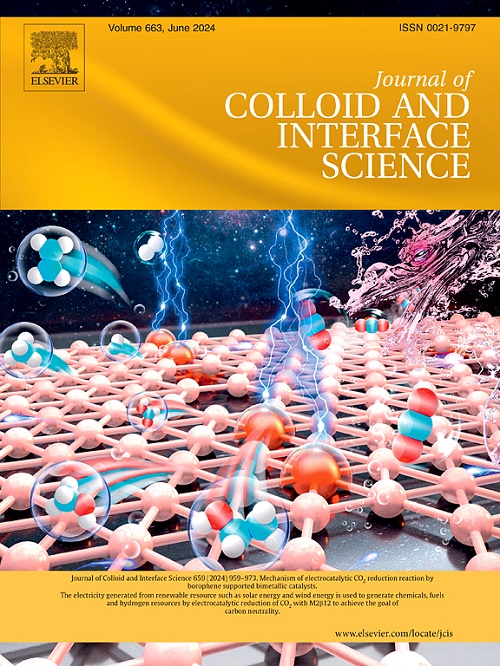Self-healing hydrogels from hyaluronic acid and dialdehyde carboxymethyl cellulose for accelerated wound healing
IF 9.7
1区 化学
Q1 CHEMISTRY, PHYSICAL
引用次数: 0
Abstract
This study aimed to introduce a bioresponsive and green hydrogel based on hyaluronic acid (HA) and dialdehyde carboxymethyl cellulose (DCMC) with remarkable potential for accelerating the wound healing process. Hydrogels made of freeze-thaw gelation were synthesized to entrap and deliver gallic acid (GA). The hydrogels were effortlessly engineered using hemiacetal interactions between HA and DCMC at proper pH and freeze-thaw cycle. The pore uniformity, mechanical strength, and thermostability can imply an appropriate degree of hemiacetal cross-link. The hydrogel revealed outstanding biocompatibility, flexibility, and self-healing properties, allowing it to uphold its form even over bodily movements. A considerable acceleration in wound closure was shown on day 10 (76.29 ± 4.08 %) compared to the control group (33.62 ± 6.24 %). Histopathological studies also demonstrated a decrease of inflammation, which can be linked to notable antioxidant and antibacterial features of the hydrogel. This research highlights the effectiveness of combining natural polymers and biocompatible cross-linker, offering a promising approach for developing advanced wound dressings.

自愈水凝胶由透明质酸和二醛羧甲基纤维素加速伤口愈合
本研究旨在介绍一种基于透明质酸(HA)和双醛羧甲基纤维素(DCMC)的生物反应性绿色水凝胶,它具有显著的加速伤口愈合的潜力。采用冻融凝胶法制备了捕集和递送没食子酸的水凝胶。在适当的pH和冻融循环下,利用HA和DCMC之间的半缩醛相互作用轻松地设计了水凝胶。孔隙均匀性、机械强度和热稳定性可以表明半缩醛交联的适当程度。水凝胶显示出出色的生物相容性、柔韧性和自我修复特性,使其即使在身体运动中也能保持其形状。与对照组(33.62±6.24%)相比,第10天伤口愈合速度明显加快(76.29±4.08%)。组织病理学研究也证明了炎症的减少,这可能与水凝胶显著的抗氧化和抗菌特性有关。本研究强调了天然聚合物与生物相容性交联剂相结合的有效性,为开发先进的伤口敷料提供了一条有前途的途径。
本文章由计算机程序翻译,如有差异,请以英文原文为准。
求助全文
约1分钟内获得全文
求助全文
来源期刊
CiteScore
16.10
自引率
7.10%
发文量
2568
审稿时长
2 months
期刊介绍:
The Journal of Colloid and Interface Science publishes original research findings on the fundamental principles of colloid and interface science, as well as innovative applications in various fields. The criteria for publication include impact, quality, novelty, and originality.
Emphasis:
The journal emphasizes fundamental scientific innovation within the following categories:
A.Colloidal Materials and Nanomaterials
B.Soft Colloidal and Self-Assembly Systems
C.Adsorption, Catalysis, and Electrochemistry
D.Interfacial Processes, Capillarity, and Wetting
E.Biomaterials and Nanomedicine
F.Energy Conversion and Storage, and Environmental Technologies

 求助内容:
求助内容: 应助结果提醒方式:
应助结果提醒方式:


